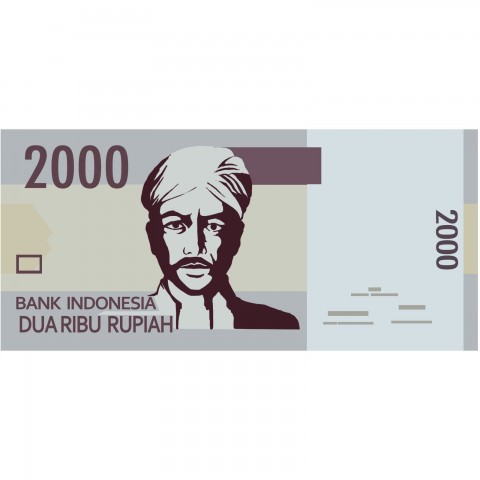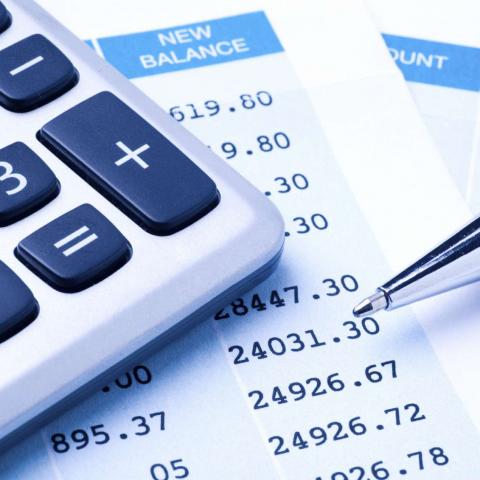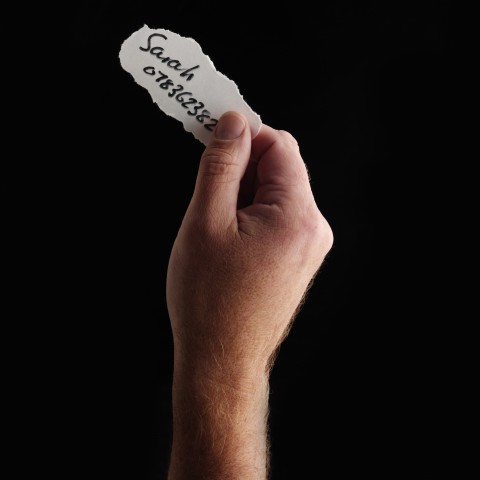I remember that one of the hardest things for me when I was actually living in Indonesia was using numbers automatically.
Anybody can count through the numbers to ten in Indonesian—you can pick that up on the plane ride over.
When you actually have to use these Indonesian numbers, though, things are probably a bit more tight. It’s probably hot, and there’s probably somebody behind you in line who doesn’t care at all that it’s your first time in an Indonesian restaurant.
Can’t you just feel their gaze on the back of your head?
Well, probably not, because Indonesians are famously polite and patient. Nevertheless, it’s not a situation you want to be in. You want to have those numbers down pat.
And the best way to learn numbers in Indonesian is to have a good solid review. So, what are the numbers in Indonseian and how can you use them?
Let’s go over numbers in Indonesian, starting from square satu.
Table of Contents
- The Number System – Zero to Ten
- Numbers 21 – 99
- Bigger and Bigger Numbers
- Ordinal Numbers in Indonesian
- Phone Numbers
- Prices
- Using Prices and Numbers as Conversation Starters
- Conclusion
1. The Number System – Zero to Ten
If you’re new to Indonesian numbers, you’ve got a lovely surprise coming. The counting system in Indonesian is extremely simple and regular, perhaps more so than the vast majority of systems around the world.
Indonesians use the Arabic numerals widely seen all over the world, even in a traditional script like Javanese or Balinese. Only in the most formal or ritualistic occasions will you ever have a chance to see the traditional numbers in Indonesian written out, and so we won’t cover them here.
Here’s how to count in Indonesian:
| English | Indonesian |
|---|---|
| “Zero” | Nol |
| “One” | Satu |
| “Two” | Dua |
| “Three” | Tiga |
| “Four” | Empat |
| “Five” | Lima |
| “Six” | Enam |
| “Seven” | Tujuh |
| “Eight” | Delapan |
| “Nine” | Sembilan |
| “Ten” | Sepuluh |
Now let’s have a look at counting in Indonesian beyond that. First we’ll look at the names for the numbers themselves, and then we’ll examine something that can trip up a lot of first-time learners.
| English | Indonesian |
|---|---|
| “Eleven” | Sebelas |
| “Twelve” | Dua belas |
| “Thirteen” | Tiga belas |
| “Fourteen” | Empat belas |
| “Fifteen” | Lima belas |
| “Sixteen” | Enam belas |
| “Seventeen” | Tujuh belas |
| “Eighteen” | Delapan belas |
| “Nineteen” | Sembilan belas |
| “Twenty” | Dua puluh |
So go back and look at “ten” there, sepuluh. Look familiar?
In Indonesian, when we count “one of” something, we almost always use the prefix se- instead of saying satu in front of that thing.
And instead of having unique words for most numbers like in English, or saying the equivalent of “six ten four” (64) like in Chinese, Indonesian is actually counting how many of each “digit place” you have. Let’s look at an example.
So the root behind “ten” is puluh, and therefore when we have “one ten” we’ll say sepuluh. Belas is a little harder to find an analogue in English. If you want, you can think of it like “one ‘tens place’” but to be honest, simply memorizing these words may be just as effective.
The important thing is that you keep sepuluh or “ten” and sebelas or “eleven” separate in your mind. That should be easy once you take the next step:
2. Numbers 21 – 99
You’re now ready to make all the numbers in Indonesian up to 99. They follow a simple pattern, best explained through example:
- tiga puluh — “thirty”
- tiga puluh satu — “thirty-one”
- empat puluh dua — “forty-two”
- enam puluh enam — “sixty-six”
- delapan puluh lima — “eighty-five”
- sembilan puluh sembilan — “ninety-nine”
As you can see, we’re now counting puluh, so “four ten two” is the way to say “forty-two.”
That’s all we have to do all the way up to 99, and even beyond!
3. Bigger and Bigger Numbers
Remember that satu puluh and satu belas always combine into sepuluh and sebelas. This pattern continues all the way to a billion! The second pattern of simply stating the numbers in order also continues uninterrupted.
- seratus — “one-hundred”
- seratus dua puluh sembilan — “one-hundred twenty-nine”
- seribu — “one-thousand”
- seribu tiga ratus empat puluh lima — “one-thousand three-hundred forty-five”
- sejuta — “one-million”
- semiliar — “one-billion”
Remember that miliar is much, much bigger than “million” in English. After miliar, Indonesian borrows internationally-used words for the absurdly large numbers.
Since they’re not as widely used, you don’t need to turn satu into a prefix anymore. Simply say satu quintilliun and people will understand perfectly. For writing numbers in Indonesian for all of the rare and huge numbers out there, go ahead and check this handy guide for the spelling rules.
English uses “millions” or “hundreds” as shorthand for saying the exact number when something is “a lot.” How can you do that in Indonesian if words don’t have plural forms?
All you need is the suffix -an. Observe:
- Ratusan orang di Bandung tinggal di Jalan Srikandi.
- “Hundreds of people in Bandung live on Srikandi Street.”
The equivalent of “dozens,” then, is puluhan, literally “tens.”
- Puluhan mahasiswa mengisikan jalan-jalan Jakarta.
- “Dozens of students are filling the streets of Jakarta.”
That’s not the only thing we can fix to Indonesian numbers.
4. Ordinal Numbers in Indonesian
Ordinal numbers (first, second, third, etc.) are an absolute breeze in Indonesian. Let’s get “first” out of the way first:
pertama — “first”
This word can comfortably fit after any noun, like so:
- Ini mobil pertama yang saya punya.
- “This is the first car I’ve had.”
After that, we simply add ke- as a prefix to any other number and get the ordinal form. Here’s a full list.
| English | Indonesian | ||
|---|---|---|---|
| “First” | Pertama | ||
| “Second” | Kedua | ||
| “Third” | Ketiga | ||
| “Fourth” | Keempat | ||
| “Fifth” | Kelima | ||
| “Sixth” | Keenam | ||
| “Seventh | Ketujuh | ||
| “Eighth” | Kedelapan | ||
| “Ninth” | Kesembilan | ||
| “Tenth | Kesepuluh |
When writing out numbers in text, especially big ones, that ke- is attached to the digit with a hyphen.
- Ini abad ke-21. (kedua puluh satu)
- “This is the twenty-first century.”
5. Phone Numbers
The phone number system in Indonesia is quite different from that of Western countries. Many people have two phones, or a phone capable of dual SIM cards. You keep one number for actually placing calls, and have another phone for data. Then you swap out your data card every few months with a new one after it expires. Don’t worry, this is simple and easy at any phone store.
Phone numbers begin with the country code +62, then a city/region code, then a personal phone number that can vary in length. Some are ten digits, and some are eleven, depending on when you got your number and if it’s a mobile or landline.
Enough cultural notes for now, though. Let’s look at the language.
The first big difference in how to say numbers in Indonesian is that the number “zero” is read as kosong (literally “empty” when translated) when reading out phone numbers.
The second is that “eight” (delapan) is often truncated to lapan. If you’re not expecting it, it can really throw you off!
Here are a couple of phrases you can use to ask people for their numbers.
- Apa nomor teleponmu?
- “What’s your phone number?”
- Nomorku kosong empat lima…
- “My number is zero four five…”
- Maaf mbak, satu kali lagi — kosong empat lima apa?
- “Sorry miss, one more time — zero four five what?”
Unlike in English, each number is read out individually, not combined into two-digit numbers.
English and Indonesian have a couple of false friends when it comes to talking about phones. A “SIM card” in English is not a “SIM” in Indonesian; that’s what they call a driver’s license. To buy a SIM card, you’ll need to ask for a kartu ponsel.
Similarly, a mobil in Indonesian might sound a lot like “mobile phone” in English, but it’s the word for “car.” A cell phone is called HP, read as if you’re simply reading out the letters. It’s also known a little more formally as a ponsel, short for telepon selular or “cellular telephone.”
6. Prices

Indonesia uses the rupiah, which is currently at around 14.000 to the US dollar. There are coins and bills, divided into several sizes as follows.
- seratus rupiah — “100 rupiah”
- dua ratus rupiah — “200 rupiah”
- lima ratus rupiah — “500 rupiah”
- seribu rupiah — “1.000 rupiah”
- dua ribu rupiah — “2.000 rupiah”
- lima ribu rupiah — “5.000 rupiah”
- sepuluh ribu rupiah — “10.000 rupiah”
- dua puluh ribu rupiah — “20.000 rupiah”
- lima puluh ribu rupiah — “50.000 rupiah”
- seratus ribu rupiah — “100.000 rupiah”
What a list! It might seem overwhelming now, but it’s the same numbers we’ve been working with all through the article.
When you go shopping or ask for the bill in Indonesia, people say these numbers fast. Interestingly, it’s just as common for people to say the equivalent of “thirty-five” as it is for people to say “thirty-five thousand rupiah.” Some people will be explicit and some not, but you’ll pick it up fast enough to avoid being confused for too long.
By the way, it would be a good idea for you to practice speaking that list aloud at natural speed, just so that when the opportunity to talk about money comes up, you won’t feel lost for words. Here are some phrases to help you along:
- Berapa harganya?
- “How much is it?”
- Harganya seratus tiga puluh enam ribu.
- “The price is one-hundred and thirty-six thousand.”
- Berapa?
- “How much?” (a little more informal)
- Kok mahal!
- “Whoa, that’s expensive!”
- Bisa lebih murah tidak?
- “Can it be made cheaper?”
- Bagaimana kalau seratus ribu dua puluh?
- “How about one-hundred and twenty thousand?”
- Delapan puluh, boleh tidak?
- “Eighty-thousand, how about it?” (informal)
One more word you should be aware of is pas. It means “just right” or “exactly.” You’ll hear it more often than you use it, which is when you give exact change. Have a look at this exchange:
Clerk: Enam puluh ribu lima ratus rupiah, mbak.
“Sixty-thousand and five-hundred rupiah, ma’am.”
You: Enam puluh ribu… ah, punya lima ratus.
“Sixty-thousand…ah, I’ve got a 500.”
Clerk: Pas, ya?
“Exact change.”
You’ll notice that I threw in a little mbak there, which is essential to understand when you deal with people in the service industry. It’s a little filler word used for politeness, and even though I’ve translated it as “ma’am,” it isn’t nearly as formal as the English equivalent.
The intricacies of these pronouns deserve a lesson all of their own, but I’ve included them here because they may confuse you if you’re listening intently for numbers and nothing else.
In short, men will hear bro, mas, or pak, and women will hear sis, mbak, or kak depending on their ages and locations in Indonesia. You should do your best to match that polite pronoun when speaking in return.
7. Using Prices and Numbers as Conversation Starters
There’s a lot to be said for language practice in unlikely places. When I lived in Indonesia, I used convenience stores as one of my main sources of conversation practice—without wasting anybody’s time.
In Indonesia, you’ll probably find yourself in convenience stores a lot because they’re air-conditioned and they have cold drinks. Usually, there’s a sale on with a big MURAH! or “cheap” sign next to it.
Your mission is to ask about the terms of the sale, especially if it might be something you’re interested in. Can you buy water bottles by the case? Is one brand of toothpaste deeply discounted? Ask about these things in Indonesian!
Then, to really get numbers in your mind, think out loud as you weigh the pros and cons of participating in the sale. Not only does this give you more time in the air conditioning, it also gives the clerk an opportunity to check your math.
You: Empat puluh ribu, lima kotak, jadi sepuluh ribu sekotak.
“Forty-thousand, five boxes, that’s ten-thousand a box.”
Clerk: Maaf pak, sebenarnya delapan ribu sekotak.
“Sorry sir, that’s actually eight-thousand a box.”
8. Conclusion
The single best way I’ve found for actually learning the meanings of numbers in other languages is to force myself to use them. I know it’s really, really easy to just skip over them when you read, and automatically convert the digits to your native language in your head.
When you do that, you’re robbing yourself of the practice you need.
All it really takes is a couple of minutes of practice every so often—probably the only part of language-learning that can be so described!
As you go through your IndonesianPod101 lessons, ask yourself what the lesson numbers were in Indonesian. As you browse through Indonesian news or Twitter, check the dates of the articles, if not the numbers in the articles themselves.
Every little bit helps, and the more you do it, the better you become.
Are there any Indonesian numbers or number-forming rules you’re still confused about? Let us know in the comments, and we’ll do our best to help you out!















